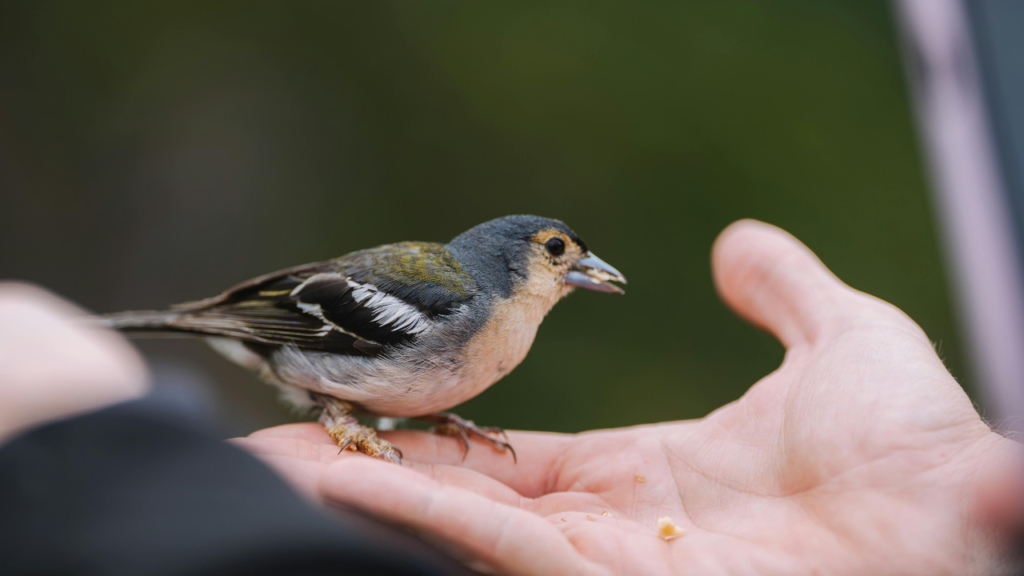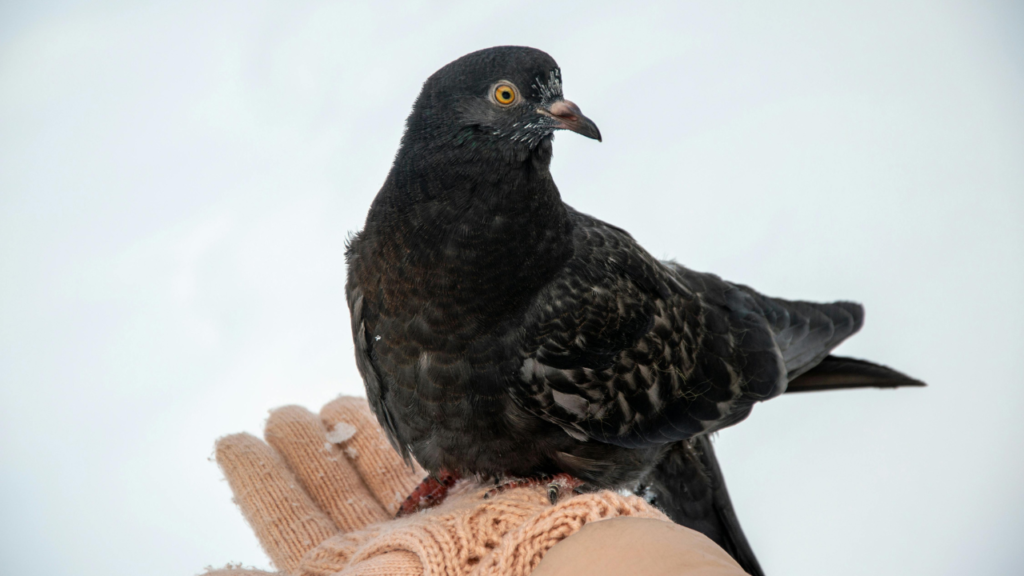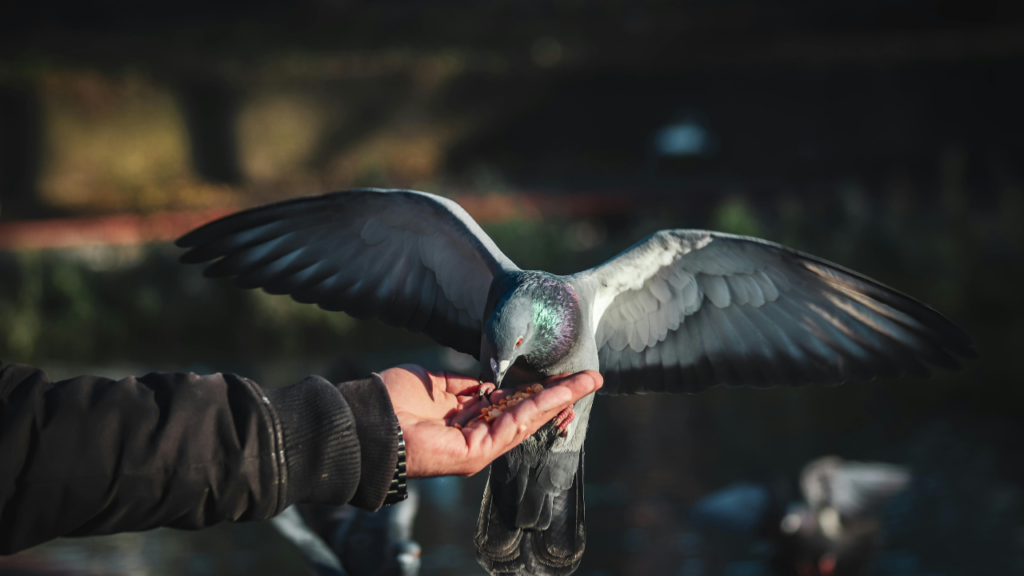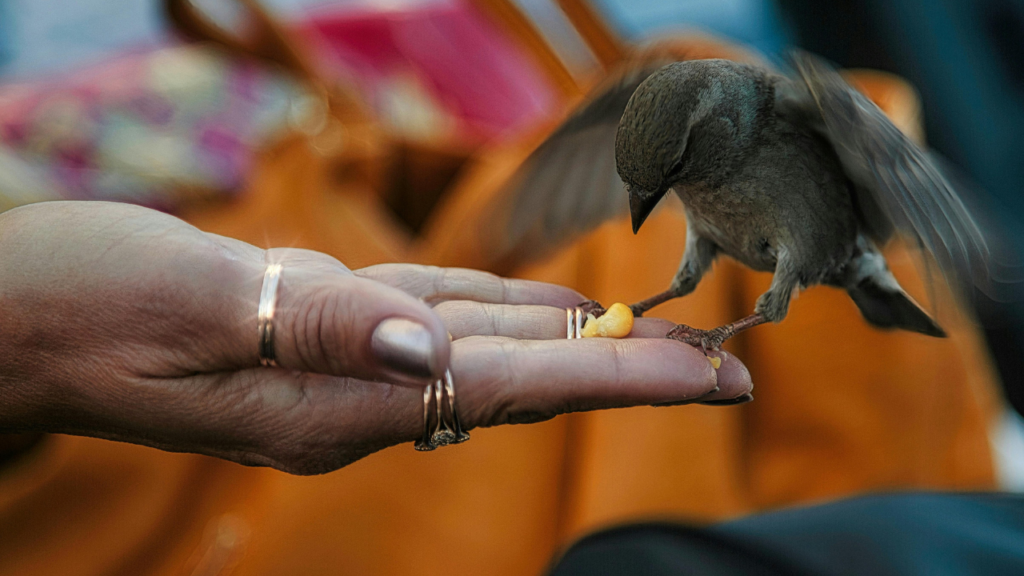How to Get a Bird to Trust You: A Step-by-Step Guide
Gaining a bird’s trust takes patience, dedication, and a true appreciation for the unique bond birds and humans can share. Birds are often cautious creatures, especially around new people, which makes trust-building even more crucial for a long-lasting, friendly relationship. This guide provides practical steps to help you understand your bird’s behavior, build trust, and strengthen your connection over time.
Understanding How to Get a Bird to Trust You
The Importance of Gaining a Bird’s Trust
For any bird owner, gaining trust is the cornerstone of a fulfilling relationship. Trust helps your bird feel secure, reducing stress and fostering a stronger bond. With trust, birds are more likely to engage with you, respond to commands, and even initiate play. A trusting bird is generally happier and more relaxed, which can significantly improve its quality of life in your care.
Recognizing Bird Body Language
Birds communicate largely through body language, and understanding these signals can make a big difference in how you approach trust-building. Signs of a relaxed and content bird include fluffing up feathers, preening, and calmly observing its surroundings. However, a bird that’s hunched, trembling, or avoiding eye contact is likely fearful or anxious. Reading these cues will help you approach your bird in ways that feel safe to them, building trust gradually without causing stress.

Creating a Safe and Comfortable Environment
Setting Up a Safe Space for Your Bird
A bird’s environment significantly impacts its comfort and willingness to trust. Choose a cage size that allows free movement, perches, and toys, and place it in a spot where the bird can feel secure yet still observe the family’s activities. Avoid high-traffic or noisy areas that could make the bird feel threatened. A consistent, safe environment helps your bird feel at ease, setting the stage for trust.
Providing Essential Needs for Comfort
Meeting your bird’s basic needs consistently is crucial to building trust. Ensure fresh food and water are available daily, and clean the cage regularly to maintain hygiene. Birds also benefit from enrichment activities like toys and foraging treats that keep them mentally stimulated. Satisfying these needs consistently helps your bird associate you with comfort and security.
Building Positive Interactions with Your Bird
Spending Quality Time Nearby
Building trust begins with simply being near your bird without forcing interactions. Try sitting quietly next to its cage or perch, letting the bird get used to your presence without feeling pressured. Engage in quiet activities like reading or working nearby, allowing the bird to observe and adjust to you at its own pace. This gradual approach eases the bird’s anxiety and lays the groundwork for future interactions.
Talking Softly and Encouraging Calm
Birds are sensitive to tone, and using a gentle, calm voice can be very reassuring. Speak softly and use a relaxed tone, repeating words and phrases in a calm voice so the bird becomes familiar with your voice. This consistency helps the bird see you as a comforting presence, fostering a safe connection that builds trust over time.
Offering Treats as a Trust-Building Tool
Choosing the Right Treats for Your Bird
Treats are a powerful way to build positive associations with you, but it’s essential to choose bird-safe treats that your bird will enjoy. Different bird species have different preferences, so experiment with small amounts of fruits, seeds, or commercial bird treats. Offer treats by placing them in the cage or holding them out gently so the bird can approach at its own pace.
Using Treats to Encourage Positive Behavior
Once you know what treats your bird loves, you can start using them strategically to encourage calm behavior. Reward the bird for approaching you, staying calm, or showing other signs of trust. While treats can be effective, avoid over-reliance by balancing them with praise and other rewards. This method teaches the bird that positive behavior leads to positive outcomes, reinforcing trust-building behavior naturally.

Training Techniques to Build Trust Gradually
Finger-Training for Closeness
Finger training is a gentle way to encourage closer interaction with your bird, starting with simply letting the bird see your hand without pressure. Offer a treat or encourage the bird to perch on your finger by placing it close to the bird in a relaxed manner. Over time, the bird will begin to feel more comfortable with this step and may voluntarily approach or step onto your hand.
Teaching Simple Commands to Build Communication
Basic commands, such as “step up” or “come,” help create a bond based on communication and mutual understanding. Use a reward system to reinforce these commands, and keep training sessions short to avoid overwhelming the bird. As the bird learns to respond to your cues, it builds a layer of trust and understanding that makes interactions smoother and more enjoyable for both of you.
Managing Setbacks in Trust Building
Recognizing Signs of Setbacks or Fear
Sometimes, birds may experience setbacks, especially if they feel threatened. Recognizing these signs—such as increased shyness, sudden aggression, or hiding—is essential for trust building. Approach with understanding and avoid actions that could worsen the bird’s fear, like sudden loud sounds or grabbing.
Patience and Persistence in Trust Building
Patience is key to successfully building trust with a bird, as some birds take longer to feel safe. Remain consistent, and don’t rush the process. Every small step towards trust should be celebrated, whether it’s the bird showing curiosity or accepting a treat. By maintaining a calm, positive demeanor, you help the bird feel safe and confident in your presence.

Maintaining and Strengthening Bird Trust Over Time
Keeping a Daily Routine for Consistency
A consistent routine signals to your bird that it can rely on you, which reinforces trust. Regular feeding times, interaction, and playtime create a comforting structure that makes your bird feel safe. Over time, the bird will look forward to these moments, strengthening your bond even further.
Advanced Bonding Activities with Your Bird
Once you’ve established a solid foundation of trust, introducing games, play, and exploration can deepen the bond. Birds are intelligent creatures, and they enjoy challenges like foraging games or puzzles. These activities not only enrich their lives but also show that you’re a source of fun and interest, making your bird eager for more interactions.
how to potty train a kitten without a litter box
Final Tips for Bird Owners
Observing Your Bird’s Preferences and Personality
Each bird has its own personality, so it’s important to tailor your approach to your bird’s specific needs and preferences. Take note of what makes your bird most comfortable and happy, whether it’s more treats, more play, or simply watching you from a distance. Adapting your approach to suit your bird shows respect and encourages further trust. It will be very helpful to get a bird to trust you.
Long-Term Care and Companionship
Building trust with a bird is a journey, not a destination. Regular care, attention, and engagement are crucial to maintaining a loving bond. Continue to provide a safe environment, observe your bird’s comfort levels, and enjoy the unique companionship that comes with a trusting bird.
Creating a Quiet and Safe Environment for Optimal Trust
Minimizing Noise and Disturbances Around Your Bird
Birds are sensitive to sounds, and unexpected loud noises can easily startle them, making it harder for them to trust their surroundings. Placing your bird’s cage in a calm area away from high-traffic spots in your home, such as near the TV or heavy foot traffic areas, can help them feel more at ease. Ideally, choose a corner or a wall area that provides them with some protection and limits exposure to loud or unexpected sounds.
When you’re interacting with your bird, use a gentle tone and avoid sudden movements that could trigger fear. By keeping the environment calm and predictable, you are creating a space where your bird feels comfortable enough to explore interactions with you at its own pace.
Allowing Your Bird Alone Time to Decompress
Just like people, birds sometimes need time to rest and recharge. Allow your bird periods of alone time during the day, especially after interactions, to help it feel secure. Birds that get enough alone time without feeling pressured will likely be more open and trusting during the moments they do interact with you. By providing this balance, you foster a healthy environment that respects your bird’s need for personal space.
Using Positive Reinforcement for Enhanced Bonding
Rewarding Small Acts of Curiosity and Friendliness
Positive reinforcement is a key aspect of trust-building with birds. Every small act of curiosity, such as moving closer to you or making eye contact, should be met with a small reward. This can be in the form of a gentle word of praise, a favorite treat, or even a brief but gentle scratch if your bird is comfortable with it. Over time, your bird will begin to associate positive experiences with your presence, which naturally builds trust.
Avoiding Negative Reinforcement to Build Genuine Trust
Negative reinforcement, such as scolding or punishment, can significantly damage trust. Birds respond much better to encouragement and rewards rather than forceful tactics or raised voices. For instance, if your bird is reluctant to step up or seems wary, avoid pushing or grabbing it. Instead, step back, give it space, and try again later. By approaching with respect and patience, you’ll foster a natural and genuine trust.
Socialization Techniques for Friendly Interactions
Introducing Safe Interactions with Other People
If your bird is getting comfortable with you, you may want to gradually introduce it to other trusted family members or friends. To ensure these interactions are positive, have others follow the same trust-building approach you use, such as talking softly, moving slowly, and offering treats. Birds are highly observant and will respond better to people who mirror the behaviors they associate with safety and calmness.
Encouraging Your Bird to Explore and Build Confidence
Encouraging exploration within a safe, designated area can boost your bird’s confidence and deepen its trust in you. Whether it’s exploring new perches and toys or engaging in playful activities, giving your bird the freedom to explore lets it know that you’re a source of enjoyment and not restriction. Be sure to supervise this time, offering comfort and praise to build your bird’s sense of security.
Respecting Your Bird’s Unique Temperament and Boundaries
Learning to Adapt Your Approach Based on Your Bird’s Personality
Just as each person has their own personality, so does each bird. Some birds may be naturally curious and social, while others may lean toward being shy or reserved. Pay close attention to your bird’s reactions during interactions, and adapt your approach to suit its comfort levels. For instance, a more social bird may respond well to direct interaction, while a shy bird might prefer indirect methods, such as watching you from a distance initially.
Allowing Your Bird to Set the Pace of Trust-Building
Building a strong bond is a journey, and respecting your bird’s comfort levels is essential to long-term trust. Avoid forcing your bird to interact or engage in activities it’s not ready for, and let it set the pace for each new step. Patience is key, as birds are sensitive to stress and need time to feel truly safe in your presence. By allowing your bird to dictate the pace of trust-building, you create a more resilient bond based on mutual respect and understanding.
Overcoming Common Challenges in Bird Trust-Building
Handling a Bird That Seems Fearful or Aggressive
If your bird shows signs of fear or aggression, it’s important not to take it personally. Birds often react out of instinct, especially if they feel cornered or insecure. Focus on observing its body language and learning what triggers these responses. You can then work to avoid those triggers and find ways to approach in a non-threatening manner. For example, if your bird tends to bite when you reach into the cage, try moving slowly and talking to it gently from outside the cage first.
Dealing with Setbacks and Maintaining Consistency
Trust-building isn’t always linear; there may be setbacks if your bird experiences fear or something unexpected happens. If setbacks occur, return to familiar routines and start with small, positive interactions. Consistency is your best friend in these situations. Regular routines, combined with calm and predictable behavior, help reassure your bird that you’re a reliable presence it can depend on.
Creating Enriching Experiences to Strengthen Trust
Engaging in Interactive Play and Bonding Games
Birds thrive on mental stimulation, and engaging them in interactive play can greatly enhance your bond. Simple games, like teaching them to mimic sounds, follow commands, or even retrieve small items, can keep their minds engaged and make interactions more exciting. Birds often bond more deeply with those who provide them with mental and physical stimulation, viewing them as both companions and sources of enrichment.
Introducing Puzzle Toys and Foraging Opportunities
Puzzle toys and foraging activities allow birds to use their natural instincts and can significantly improve their happiness and trust. Scatter small treats or favorite seeds in a foraging toy or around their play area to encourage exploration. Your bird will come to see you as the provider of these enjoyable activities, reinforcing its sense of trust and excitement whenever it sees you.
Final Tips for Long-Term Trust Maintenance
Continuing to Build Trust Over Time
Trust-building is an ongoing process, not a one-time achievement. Regular interaction, attention to your bird’s changing needs, and patience are all part of long-term trust maintenance. Birds remember kindness and consistency, so keep up routines that make your bird feel safe and appreciated. Adjust as needed to fit its evolving personality and preferences over the years.
Understanding and Celebrating Small Progress
Birds are naturally cautious, so even the smallest signs of progress are worth celebrating. Whether your bird perches closer to you, accepts a treat from your hand, or chirps in response to your voice, these small steps are significant. Celebrating them reinforces a positive environment where your bird feels valued, further cementing the trust you’ve worked so hard to build.

Conclusion:
Creating a trusting relationship with your bird is a journey filled with small, rewarding moments. Every time your bird moves a little closer, responds to your voice, or shows curiosity, it’s a testament to the trust you’ve built. With patience, consistent care, and an understanding of its unique personality, you’ll foster a bond that enriches both of your lives. Birds are complex and fascinating creatures, and earning their trust is one of the most fulfilling parts of being a bird owner.
FAQs:
How long does it take for a bird to trust you?
Building trust can take anywhere from weeks to months, depending on your bird’s personality and past experiences. Consistency and patience are key to accelerating the process.
Can I earn the trust of a bird that has been mistreated before?
Yes, it’s possible to earn the trust of a mistreated bird, though it may take more time. Approach gently, provide a safe environment, and follow trust-building techniques to help it feel secure.
Why does my bird seem afraid of hands?
Birds often view hands as threats, especially if they’ve had negative past experiences. Start by keeping your hands visible but non-threatening, gradually allowing your bird to approach at its own pace.
What should I do if my bird won’t take treats from my hand?
If your bird is hesitant, try placing treats nearby and allow it to observe. Eventually, as it becomes more comfortable, it may start taking treats directly from your hand.
How can I prevent my bird from biting when I approach?
Biting usually signals fear or discomfort. Avoid approaching too quickly, and try using soft tones or offering a treat to make the interaction positive and less threatening.

